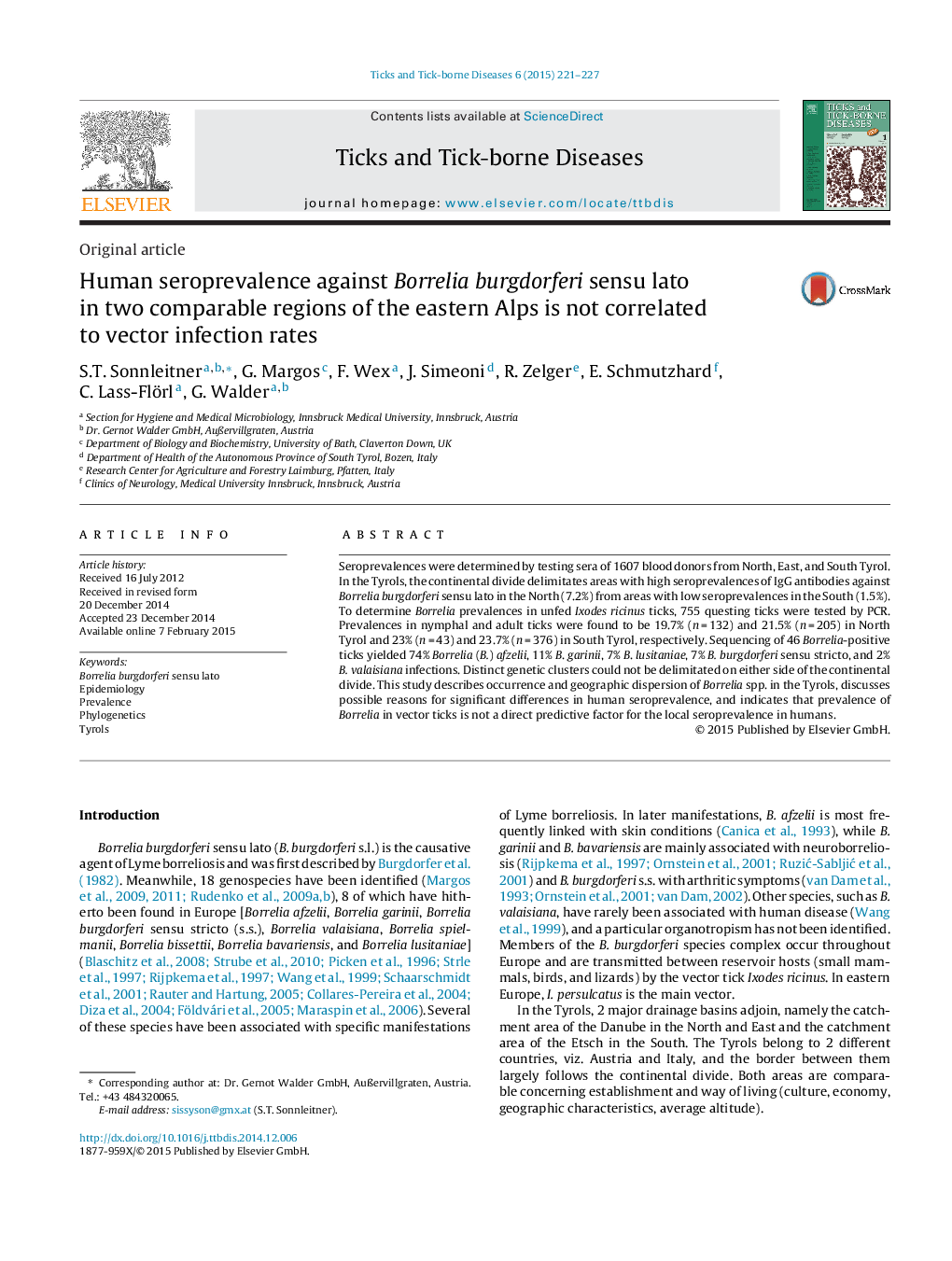| Article ID | Journal | Published Year | Pages | File Type |
|---|---|---|---|---|
| 2473914 | Ticks and Tick-borne Diseases | 2015 | 7 Pages |
Seroprevalences were determined by testing sera of 1607 blood donors from North, East, and South Tyrol. In the Tyrols, the continental divide delimitates areas with high seroprevalences of IgG antibodies against Borrelia burgdorferi sensu lato in the North (7.2%) from areas with low seroprevalences in the South (1.5%). To determine Borrelia prevalences in unfed Ixodes ricinus ticks, 755 questing ticks were tested by PCR. Prevalences in nymphal and adult ticks were found to be 19.7% (n = 132) and 21.5% (n = 205) in North Tyrol and 23% (n = 43) and 23.7% (n = 376) in South Tyrol, respectively. Sequencing of 46 Borrelia-positive ticks yielded 74% Borrelia (B.) afzelii, 11% B. garinii, 7% B. lusitaniae, 7% B. burgdorferi sensu stricto, and 2% B. valaisiana infections. Distinct genetic clusters could not be delimitated on either side of the continental divide. This study describes occurrence and geographic dispersion of Borrelia spp. in the Tyrols, discusses possible reasons for significant differences in human seroprevalence, and indicates that prevalence of Borrelia in vector ticks is not a direct predictive factor for the local seroprevalence in humans.
